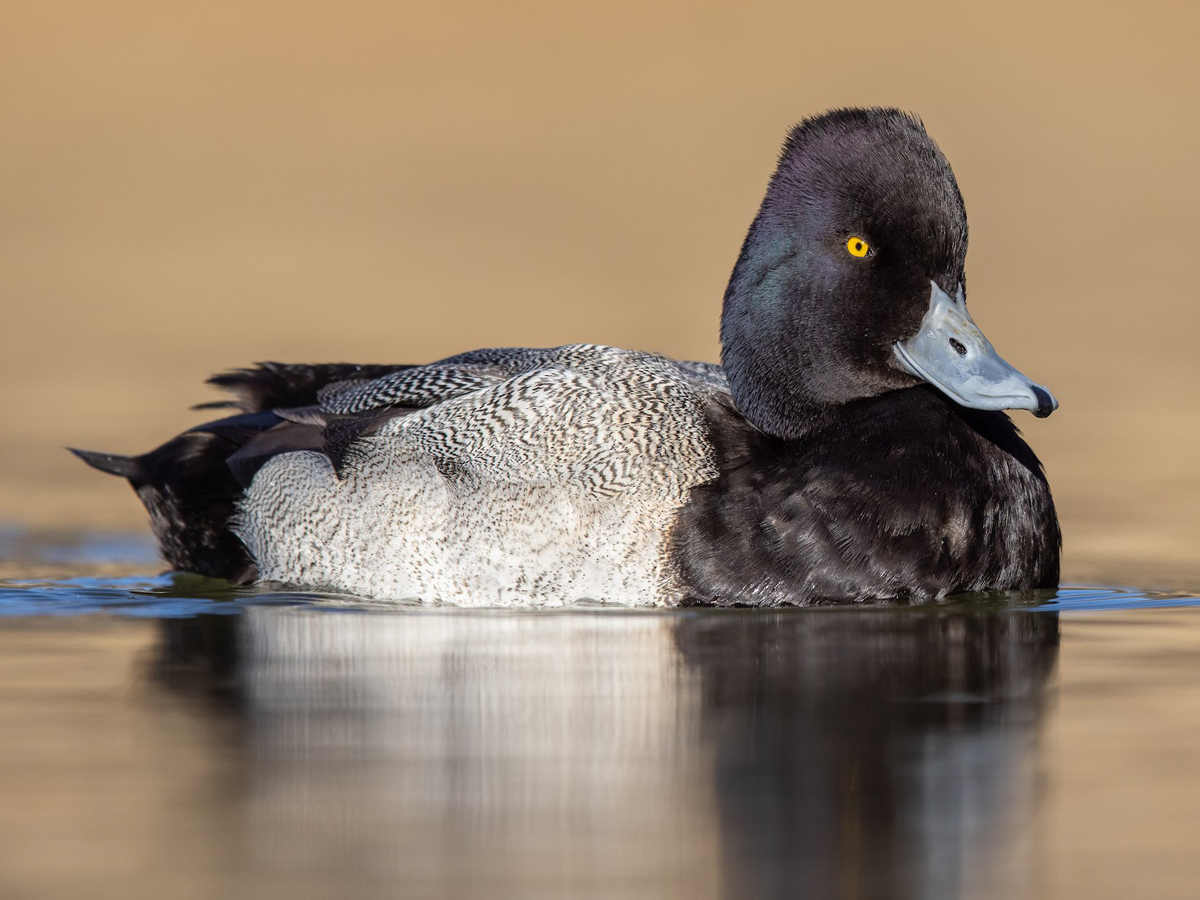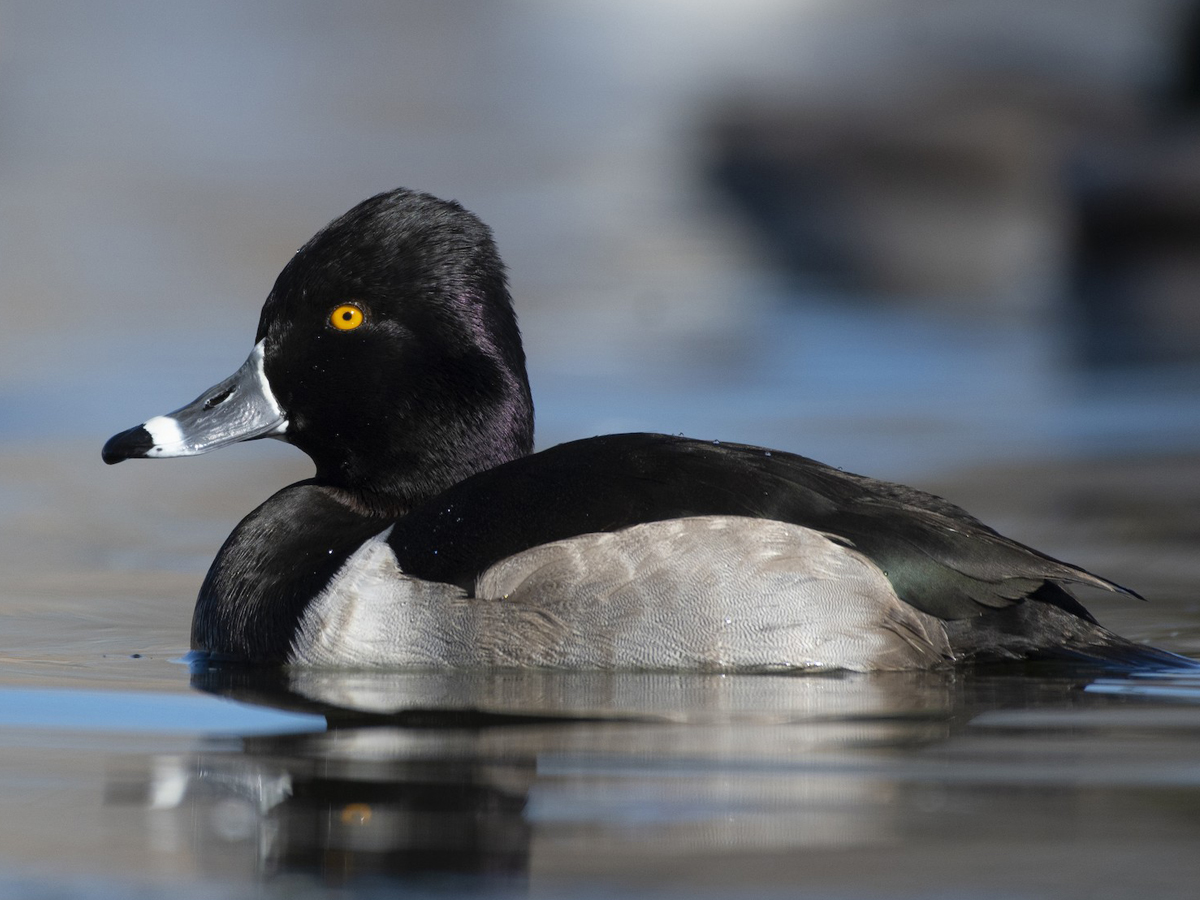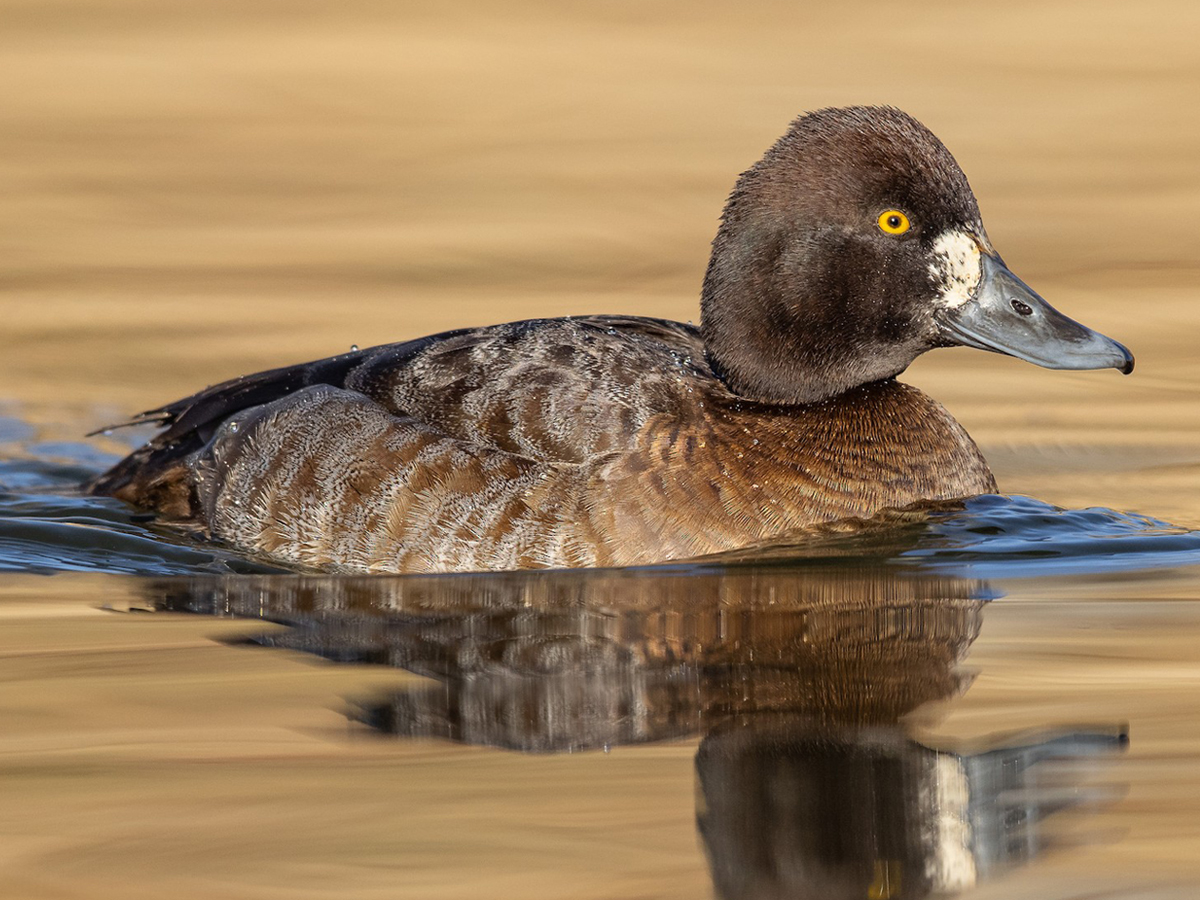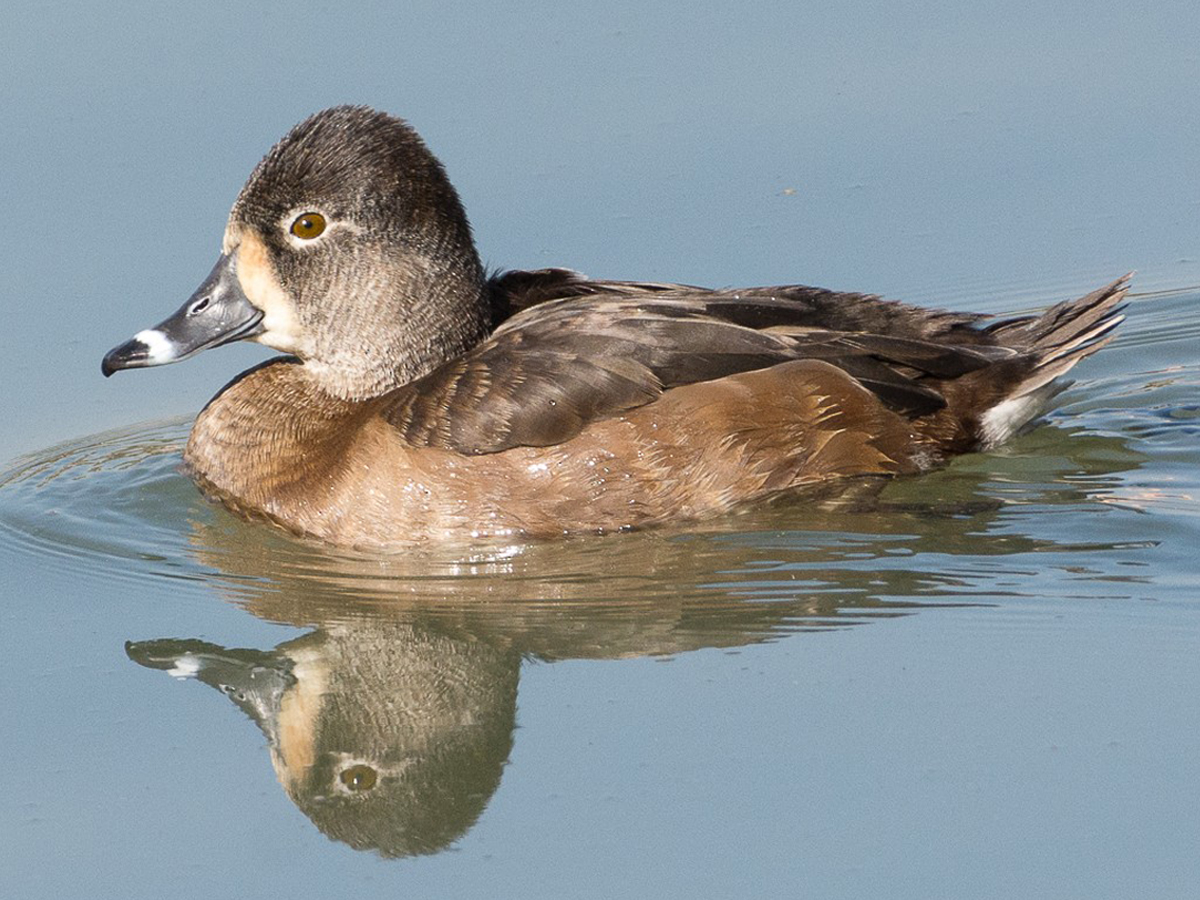Lesser Scaup and Ring-necked Duck




Here are two waterfowl species that often throw bird enthusiasts for a loop! Can you tell them apart? Especially from afar, these birds can look a lot alike. Males of both species have dark heads and chests and gray sides, while females are similarly brown. As with many waterfowl, “Where is the white?” is a great question to ask yourself to help with ID. Keep an eye on where the white markings appear (or don’t appear!) on each species. Here are a few visual ID cues to look for:
| ID Key | Lesser Scaup | Ring-necked Duck |
|---|---|---|
| Bill | Black tip of the bill | Dark bill tip with a white ring near the end of the bill, not always easy to spot from far away |
| Head Shape | Slightly peaked head, but more rounded than the Ring-necked Duck | Pronounced peak at the back of the head |
| Back and Sides (Male) | Back is gray with thin black barring. Sides are almost uniformly light gray. | Dark color extends all the way down the back. A spur of bright white just next to the breast contrasts against otherwise gray sides. |
| Cap and Eye (Female) | Uniformly dark brown face with a splash of white up from the bill. | Darker plumage on top of the head, and lighter plumage on the face creates a “capped” look. A ring of white surrounds the bird’s eye. |
Have you got all of that? Put these cues to the test with Bird Academy’s SnapID tool and practice distinguishing between Lesser Scaups and Ring-necked Ducks. You can replay the quiz as many times as you want. Each time you hit “Play Again,” you’ll have new photo matchups to practice on. Just click “Start SnapID Challenge” to get started!
Test Your Waterfowl ID Skills
We hope you learn to quickly identify these two key diving ducks. Keep in mind that things can get extra tricky in the wild where the ranges of these birds overlap with the Greater Scaup’s! Look to the head shapes of Greater and Lesser Scaups to help you make an ID. You can learn more about this extra-tricky comparison on All About Birds.
Interested in learning even more about waterfowl ID? Dive in to the details with Be a Better Birder: Duck and Waterfowl Identification and learn keys to ID for common waterfowl species in the U.S. and Canada.
